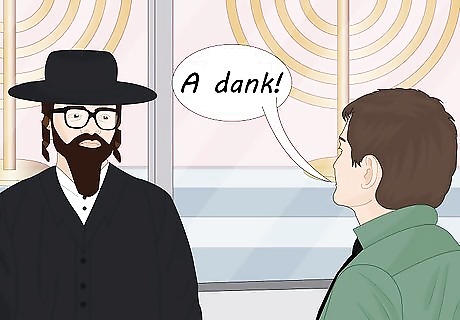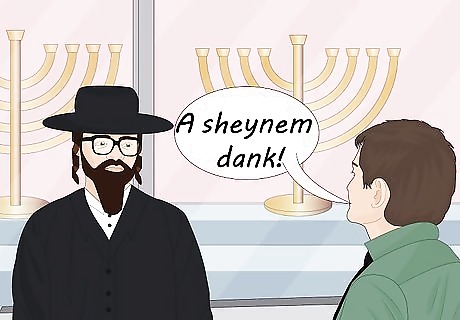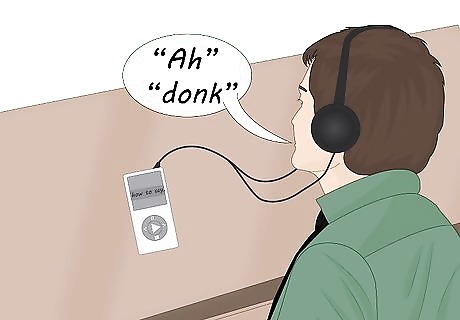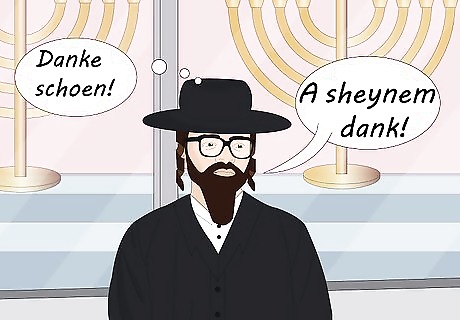
views
X
Research source
Read on for more cultural context!

Say "A dank" (אַ דאַנק). Pronounce it "ah dank". This phrase directly translates to "thank you." Say it in any situation that calls for thanks.

Learn how to say "thank you very much." Say "A sheynem dank" (אַ שיינעם דאַנק) – pronounced "ah shay-nem dank". Bring out this phrase in situations where you are feeling especially grateful.

Practice the pronunciation. If you're going to try speaking Yiddish, it's important that you take the time to say it right. Search for online videos or audio recordings of people saying "a dank". If you know anyone that speaks Yiddish, try asking him or her to say it aloud for you.

Understand the roots of Yiddish. It is no coincidence that "a dank" and "a sheynem dank" sound like the German "danke" and "danke schoen." Yiddish is the traditional tongue of the Ashkenazi Jews. The language came about in 9th century Central Europe, drawing its influences from a rich cultural context of languages and peoples. Yiddish took elements from German, Hebrew, and Aramaic, as well as certain Slavic and Romance languages. Many Yiddish words (including אַ דאַנק, or "a dank") are written in the original Hebrew or Aramaic. Words of European origin are written out using the phonetic pronunciation.
















Comments
0 comment